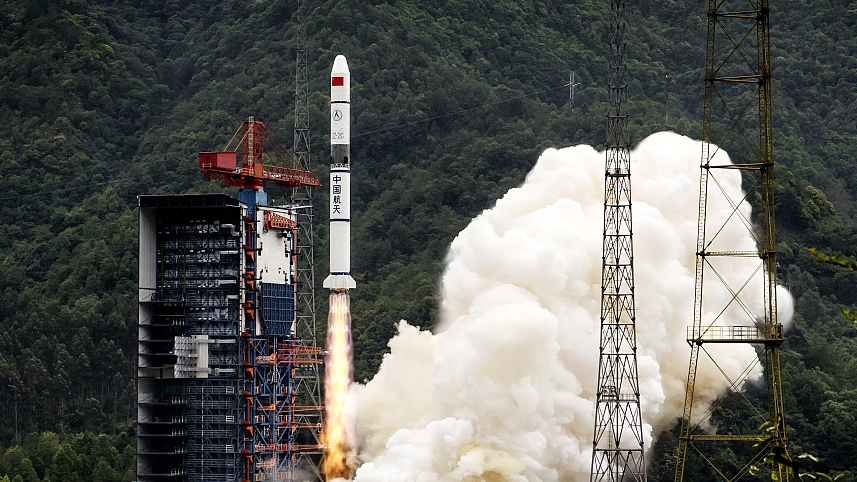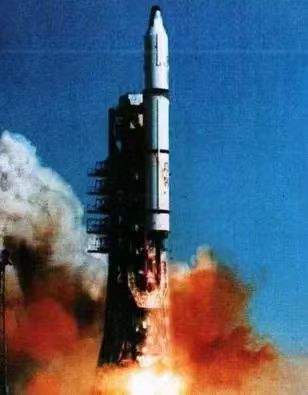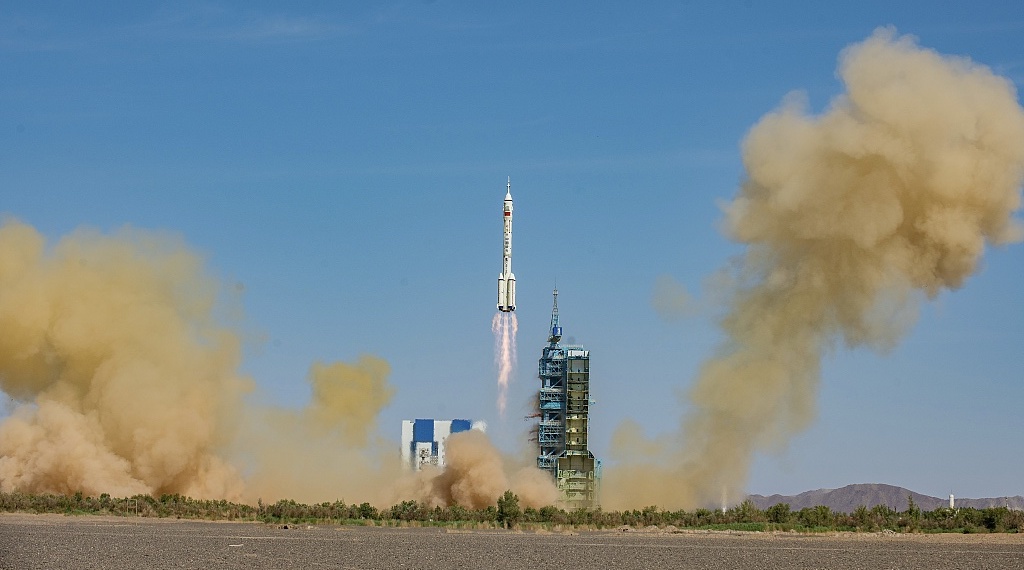
A Long March-2C blasts off from Xichang Satellite Launch Center in southwest China's Sichuan Province, July 26, 2019. /CFP
A Long March-2C blasts off from Xichang Satellite Launch Center in southwest China's Sichuan Province, July 26, 2019. /CFP
It's been 40 years since China's Long March-2C carrier rocket debuted over a desert in Northwest China, sending a retrievable satellite into orbit. The model has since become a core launch vehicle for the country's interplanetary expeditions.
Its maiden flight took off on September 9, 1982, making it the longest-serving carrier rocket in China. The rocket was gradually adapted, and undertook all of the country's retrievable satellite launches in the following decade.

The maiden flight of Long March-2C, September 9, 1982. /China Media Group
The maiden flight of Long March-2C, September 9, 1982. /China Media Group
The current version of the March-2C is 43 meters tall, with a carrying payload capacity of 2,500 kilograms to low-Earth orbit (LEO).
The Long March-2C was the first Chinese carrier rocket type to undertake international launch services. In 1985, the rocket served its first international order for a French company after it was displayed at the Paris Air Show, followed by a Swedish order in 1987 to send science test satellite "FREJA" into space.
The successful international launches were only part of the many significant achievements made by the Long March-2C. Over the past four decades, the rocket has pioneered many upgrades and new rocket technologies.
On July 26, 2019, the rocket tested a technology for the retrieval of first stage with grid fins deployed, narrowing down its landing areas by 96 percent. It is also a technique crucial for the development of reusable rockets.

A Long March-2F Y14 carrier rocket, carrying the Shenzhou-14 crewed spaceship, blasts off at 10:44 a.m. Beijing Time from Jiuquan Satellite Launch Center in Northwest China, June 5, 2022. /CFP
A Long March-2F Y14 carrier rocket, carrying the Shenzhou-14 crewed spaceship, blasts off at 10:44 a.m. Beijing Time from Jiuquan Satellite Launch Center in Northwest China, June 5, 2022. /CFP
The two-stage Long March-2C lies the foundation for many other adaptations of Long March liquid-propellant rocket series. For example, the Long March-2F – a carrier rocket that has successfully launched many Chinese astronauts and space station modules to orbit – was adapted by bundling four liquid propellants on the first stage and optimized for manned space missions.
Ma Huiting, chief commander of the Long March-2C at the China Academy of Launch Vehicle Technology, said the rocket has the advantages of high reliability and capable of responsive launches with moderate carrying payload capacity.
It will maintain an annual launch frequency of more than 10 times during the 2021-2025 period, according to Ma.

